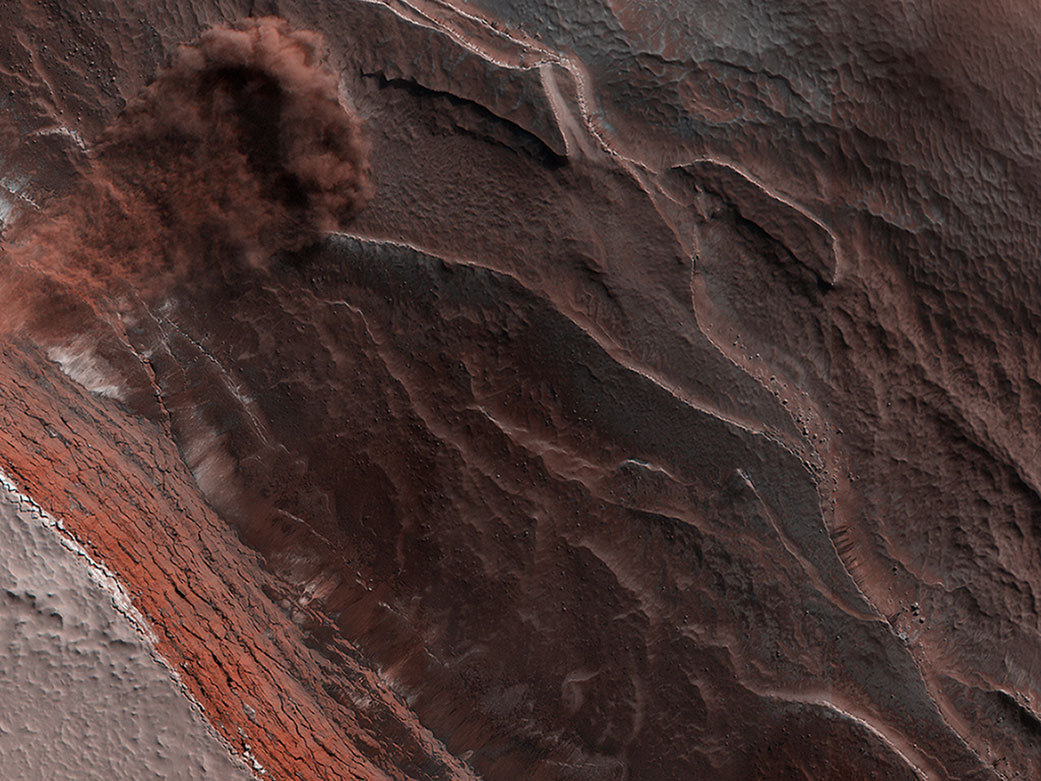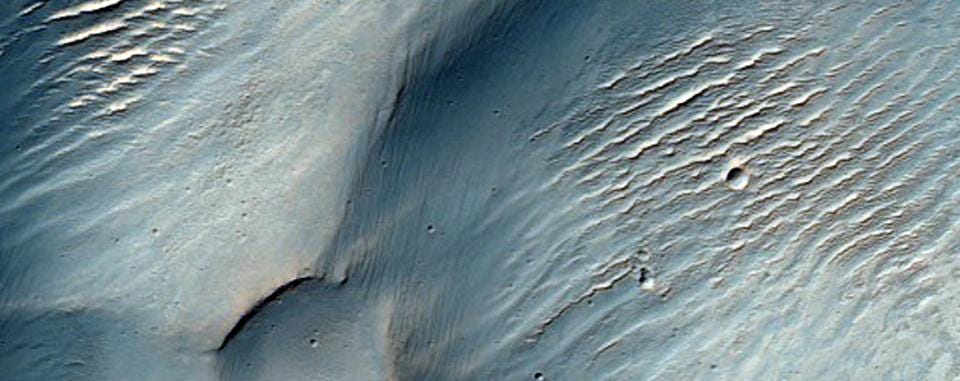Launched in August of 2005, the High Resolution Imaging Science Experiment (HiRISE) is flying onboard the Mars Reconnaissance Orbiter (MRO) mission. By combining very high resolution and signal-to-noise ratio with a large swath width, it is possible to image on a variety of scales down to 1 meter, a scale currently afforded only in glimpses by landers. Lockheed Martin Space Systems is the prime contractor for the project and built the spacecraft. The HiRISE camera was built by Ball Aerospace and Technology Corporation and is operated by the University of Arizona. The image data were processed using the U.S. Geological Survey’s ISIS3 software. From a stunning descent picture to one featuring pieces of the descent system on the surface, HiRISE has a growing collection of observations of the Perseverance rover’s mission on the Red Planet. Boundary Condition Controls on the High-Sand-Flux Regions of Mars.
The High Resolution Imaging Experiment is known as HIRISE. The big and powerful HIRISE camera takes pictures that cover vast areas of Martian terrain while being able to see features as small as a kitchen table.

Tech Specs
| Main Job | To study active surface processes and landscape evolution. |
| Location | On the Nadir side of the spacecraft looking down at Mars. |
| Mass | ~143 pounds (65 kg), including thermal control system, cables, etc |
| Power | 60 Watts |
| Size | ~5.2 feet (1.6 meters) long by ~2.9 feet (0.9 meter) diameter |
| Data Return | Can acquire images containing up to 28 Gb (gigabits) of data in as little as 6 seconds |
| Color Quality | 14 electronic detectors, each covered by a filter in one of three wavelength bands: 400 to 600 nanometers (blue-green), 550 to 850 nanometers (red), or 800 to 1000 nanometers (near infrared), producing color images in the central portion of the field of view. |
| Image Size | Pixel size in images taken from an altitude of 186 miles (300 kilometers) is about 12 inches (30 centimeters) across (about basketball-size). Overall image size is a swath width of 3.7 miles (6 kilometers) by a programmable image length of up to 37 miles (60 kilometers). |
| Image Resolution | Smallest resolvable features in the images are about 3 feet (~1 meter) across (features as small as a kitchen table in images covering swaths of Mars' surface 3.7 miles, or 6 km wide). |
| Focal Length | ~40 feet (12 meters) |
| Focal Ratio and Field of View | f/24, yielding an IFOV of 1 x 1 μrad and a telescope FOV of 1.14 degrees x 0.18 degrees |
High Resolution Imaging Science Experiment
HiRISE (High Resolution Imaging Science Experiment) has photographed hundreds of targeted swaths of Mars' surface in unprecedented detail.
The camera operates in visible wavelengths, the same as human eyes, but with a telescopic lens that produces images at resolutions never before seen in planetary exploration missions. These high-resolution images enable scientists to distinguish 1-meter-size (about 3-foot-size) objects on Mars and to study the morphology (surface structure) in a much more comprehensive manner than ever before.
HiRISE also makes observations at near-infrared wavelengths to obtain information on the mineral groups present. From an altitude that varies from 200 to 400 kilometers (about 125 to 250 miles) above Mars, HiRISE acquires surface images containing individual, basketball-size (30 to 60 centimeters, or 1 to 2 feet wide) pixel elements, allowing surface features 4 to 8 feet across to be resolved. These new, high-resolution images are providing unprecedented views of layered materials, gullies, channels, and other science targets, in addition to characterizing possible future landing sites.

Nasa Hirise Mars
Areas for close-up HiRISE imaging are selected on the basis of data returned from Mars Global Surveyor, Mars Odyssey, and regional surveys conducted by the Mars Reconnaissance Orbiter's own instruments.
The Principal Investigator (lead scientist) for HiRISE is Alfred McEwen from the Lunar and Planetary Laboratory at the University of Arizona.
Visit the instrument site: HiRISE Instrument Site
HiRISE is the most powerful camera ever sent to another planet. From on-board NASA's Mars Reconnaissance Orbiter, HiRISE (High Resolution Imaging Science Experiment) observes the Martian surface at resolutions down to 25 cm/pixel, in three wavelengths and in stereo. The USGS Astrogeology Science Center in Flagstaff, AZ participates in the daily operations of HiRISE and with the processing, distrubution and archiving of this data. View thousands of images and suggest your own at UAHiRISE.org.
These images are enhanced color views. The HiRISE camera samples and wavelengths of light that are different than human eyes would see, and the images are stretched to optimize color contrast. The HiRISE bandpasses are 400 - 600 nm (blue - green), 550 - 850 nm (red), 800 - 1000 nm (infrared). The 'RGB' images display the red data as red, the blue - green data as green, and a ratio of the red to blue - green data as blue. In the 'IRB' images, the infrared, red, and blue - green data are displayed in color as red, green and blue respectively.


Hirise Mars Photos
Image: Mars Exploration Rover Opportunity (arrow) at the southeast rim of Santa Maria crater.
